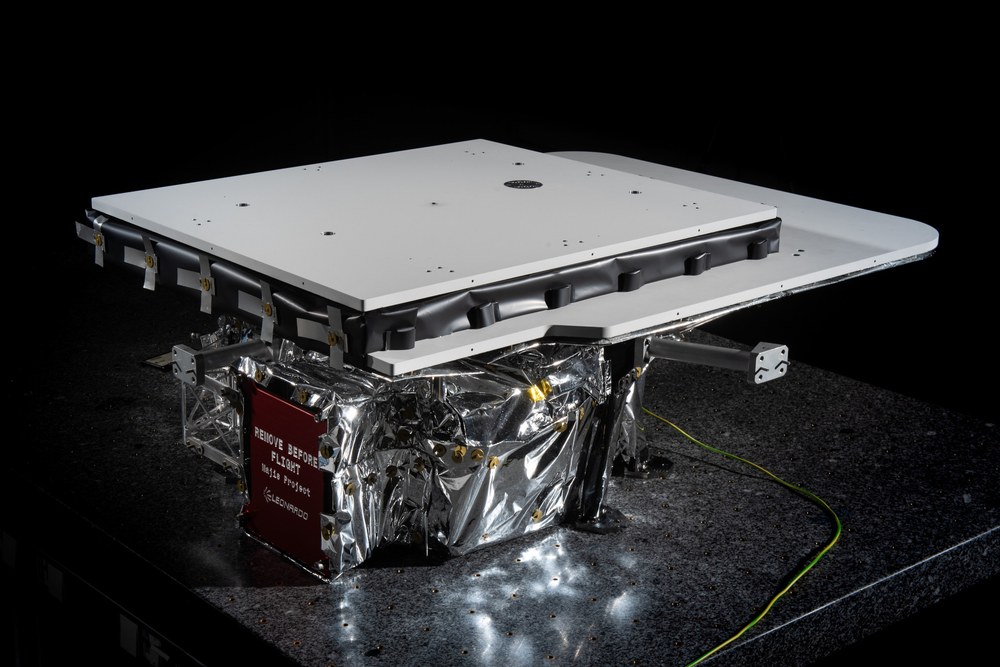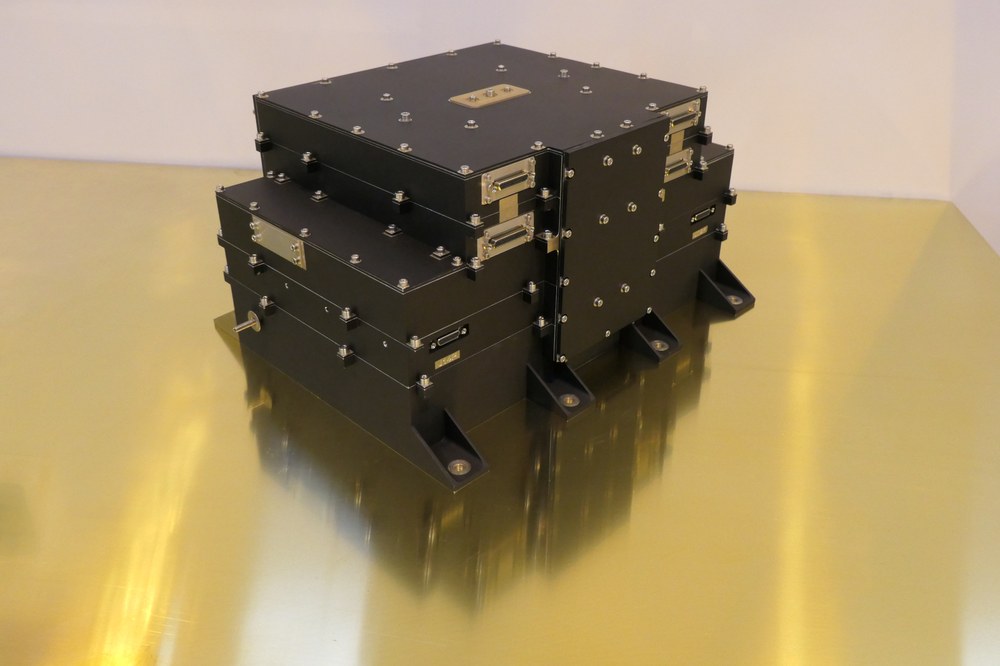The MAJIS imaging spectrometer
The Moons And Jupiter Imaging Spectrometer (MAJIS) is a hyperspectral imaging spectrometer. It measures in many narrow bands in the electromagnetic spectrum by extracting information from incident light. It is used to observe Jupiter's atmosphere, the properties of clouds in the lower atmospheric layer, and to study ice, organic matter, and minerals on the surfaces of Jupiter's moons and their outer atmospheric layer.
MAJIS was developed and built by a consortium led by the Institut d'Astrophysique Spatiale (IAS) in Orsay, France with support from the French space agency CNES and the Istituto di Astrofisica e Planetologia Spaziali (IAPS), as well as the Leonardo company (LDO) in Italy.
DLR is directly involved in the MAJIS experiment through Katrin Stephan from the Institute of Planetary Research in Berlin and supports the MAJIS team in the area of observation planning and the scientific study of the moons in the Jovian system.
The scientists involved in MAJIS aim to explore the properties of Jupiter's atmosphere with its highly complex cloud bands and its dynamics, as well as the mineralogical composition of the surfaces of its natural satellites, especially the icy moons Ganymede and Callisto.
Water ice in the focus of MAJIS
The wavelength range in which MAJIS detects the planetary surfaces is particularly suitable for investigating the spectral signature of water ice. This serves not only to identify water ice on the surfaces, but also to determine the proportion of water ice in the surface material and its physical properties. The size of the ice particles and the surface temperature can be estimated in this way.
Since these properties are sensitive to environmental conditions – for example, bombardment by charged particles from Jupiter's magnetosphere – as well as to geological processes, such as tectonic or ice volcanic activity coming from the interior and physical and chemical weathering, their determination is essential for understanding the causes of the physical properties of water ice in a geographical and geological context.
Organic compounds on Ganymede and Callisto?
In addition to water ice, MAJIS will also identify non-ice compounds in the surface ice and map their distribution on the surface of Ganymede. The presence and type of distribution of salts, as already identified on Europa, could provide clues to past tectonic activity, while salts from Ganymede's subsurface ocean could have been transported to the surface. MAJIS will also characterise dark rock material on Ganymede and Callisto, identify possible organic compounds and infer their origin and formation processes.
MAJIS technical data
Channels | Wavelength ranges (micrometres) | Spectral resolution (nanometres) | Research objectives |
|---|---|---|---|
Visible and Near-Infrared (VIS-NIR) | 0.5–2.35 | 3.66 to 6.51 |
|
Infrared (IR) | 2.28–5.56 | 3.66 to 6.51 | Organic compounds: • brought in by meteorites or • formed by interaction with the Jupiter magnetosphere |
High spectral resolution
The MAJIS instrument consists of three main hardware units: the optical head, the main electronics unit and a wiring harness connecting the electronically controlled components. The optical head and the detectors of the two spectral channels are cooled down to cryogenic temperatures: approximately 130 Kelvin for the optical head structure and VIS-NIR channel, approximately 90 Kelvin for the IR channel). The entire structure of the optical head is kept thermally isolated.
MAJIS, like all other instruments, first copies the recorded data into the area of the spacecraft's main memory (Solid State Mass Memory; SSMM) designated for MAJIS. At agreed times, JUICE turns towards Earth with its main antenna to transmit the data. Ground stations intercept the data and distribute it to the instrument teams.
The high spectral resolution of the spectral channels makes it possible to record a continuous spectrum for each pixel. Both channels operate simultaneously, with the bridging range of the two channels set to approximately 2.3 (±0.05 micrometres). Photons that pass through a beam splitter at an angle of 0.06 radians are sent to one of the channels depending on their wavelength. The spectrometer scatters the photons at the detector, the longitudinal slit direction is spatial, and the transverse slit direction is spectral.
MAJIS can be operated in either push-broom or scan mode, depending on the requirements of different mission phases. The spatial resolution is up to 25 metres on Ganymede and about 100 kilometres on Jupiter.
ESA mission with strong German participation
JUICEi s ESA's largest and most comprehensive mission to explore the planets of the Solar System. In addition to ESA , NASA and the Japanese space agency JAXA have also contributed to the mission. ESA is providing funding for the satellite platform, the launch with an Ariane 5 ECA rocket and the operation of the spacecraft. The funding for the scientific payloads for JUICE is largely provided by national space agencies and the participating institutes themselves. In addition to the JANUS, SWI and GALA experiments, the German Space Agency at DLR is funding further German scientific contributions from the National Space Programme with the Particle Environment Package (PEP) particle spectrometer, the Jupiter Magnetometer (J-MAG), the Radar for Icy Moons Exploration (RIME) radar instrument and an instrument for radiosounding Jupiter's atmosphere (3GM).


